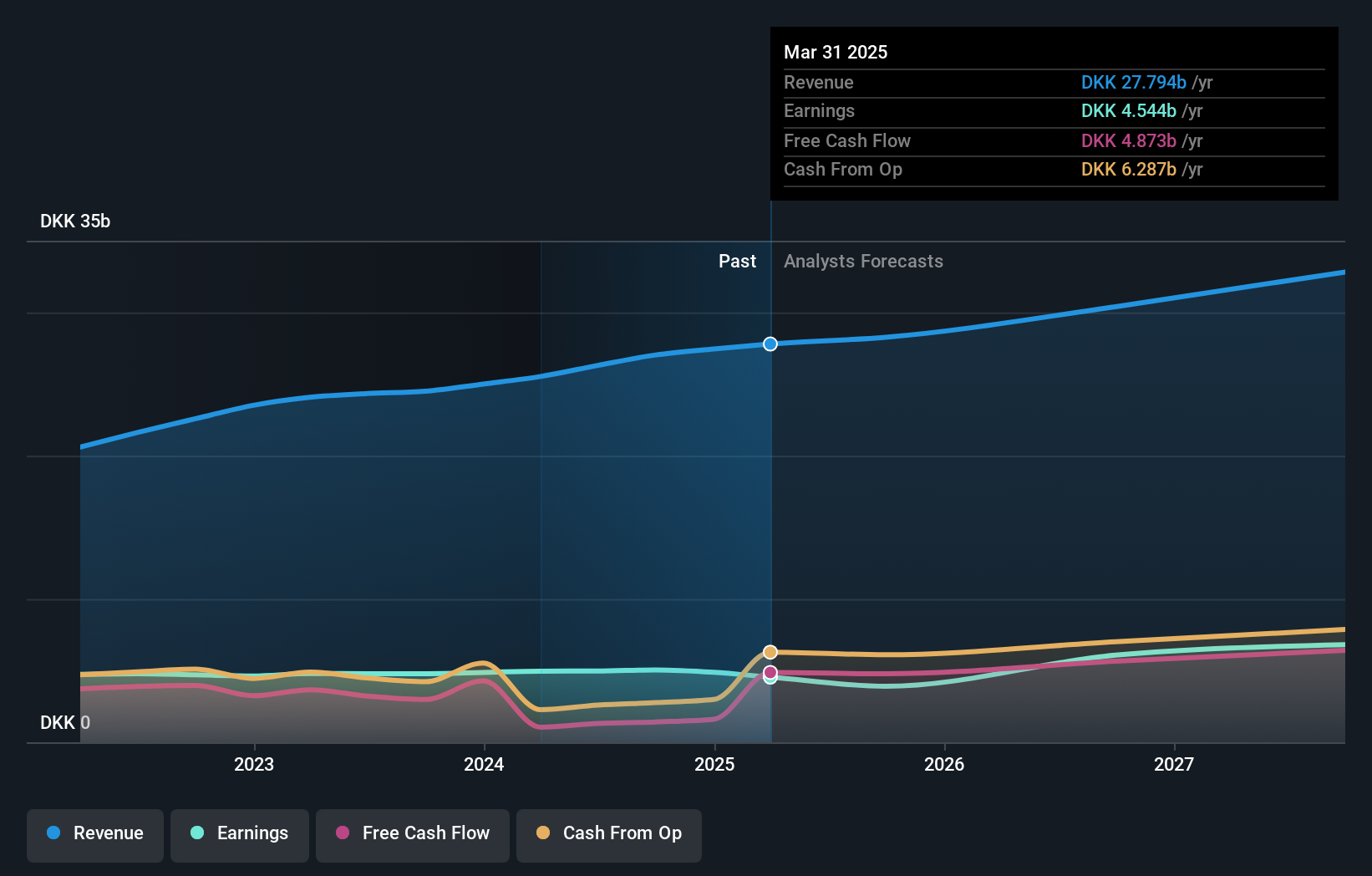Individual investors account for 40% of Coloplast A/S' (CPH:COLO B) ownership, while private companies account for 30%
Key Insights
- The considerable ownership by individual investors in Coloplast indicates that they collectively have a greater say in management and business strategy
- The top 20 shareholders own 50% of the company
- Institutions own 24% of Coloplast
A look at the shareholders of Coloplast A/S (CPH:COLO B) can tell us which group is most powerful. The group holding the most number of shares in the company, around 40% to be precise, is individual investors. Put another way, the group faces the maximum upside potential (or downside risk).
Meanwhile, private companies make up 30% of the company’s shareholders.
Let's delve deeper into each type of owner of Coloplast, beginning with the chart below.
Check out our latest analysis for Coloplast

What Does The Institutional Ownership Tell Us About Coloplast?
Institutional investors commonly compare their own returns to the returns of a commonly followed index. So they generally do consider buying larger companies that are included in the relevant benchmark index.
Coloplast already has institutions on the share registry. Indeed, they own a respectable stake in the company. This implies the analysts working for those institutions have looked at the stock and they like it. But just like anyone else, they could be wrong. It is not uncommon to see a big share price drop if two large institutional investors try to sell out of a stock at the same time. So it is worth checking the past earnings trajectory of Coloplast, (below). Of course, keep in mind that there are other factors to consider, too.

Coloplast is not owned by hedge funds. Coloplast Holding Aps is currently the largest shareholder, with 30% of shares outstanding. Benedicte Find is the second largest shareholder owning 3.6% of common stock, and BlackRock, Inc. holds about 2.6% of the company stock.
After doing some more digging, we found that the top 20 have the combined ownership of 50% in the company, suggesting that no single shareholder has significant control over the company.
While it makes sense to study institutional ownership data for a company, it also makes sense to study analyst sentiments to know which way the wind is blowing. There are plenty of analysts covering the stock, so it might be worth seeing what they are forecasting, too.
Insider Ownership Of Coloplast
While the precise definition of an insider can be subjective, almost everyone considers board members to be insiders. The company management answer to the board and the latter should represent the interests of shareholders. Notably, sometimes top-level managers are on the board themselves.
I generally consider insider ownership to be a good thing. However, on some occasions it makes it more difficult for other shareholders to hold the board accountable for decisions.
We can see that insiders own shares in Coloplast A/S. Insiders own kr.8.2b worth of shares (at current prices). It is good to see this level of investment. You can check here to see if those insiders have been buying recently.
General Public Ownership
With a 40% ownership, the general public, mostly comprising of individual investors, have some degree of sway over Coloplast. While this group can't necessarily call the shots, it can certainly have a real influence on how the company is run.
Private Company Ownership
We can see that Private Companies own 30%, of the shares on issue. It might be worth looking deeper into this. If related parties, such as insiders, have an interest in one of these private companies, that should be disclosed in the annual report. Private companies may also have a strategic interest in the company.
Next Steps:
It's always worth thinking about the different groups who own shares in a company. But to understand Coloplast better, we need to consider many other factors. Take risks for example - Coloplast has 2 warning signs (and 1 which is potentially serious) we think you should know about.
Ultimately the future is most important. You can access this free report on analyst forecasts for the company.
NB: Figures in this article are calculated using data from the last twelve months, which refer to the 12-month period ending on the last date of the month the financial statement is dated. This may not be consistent with full year annual report figures.
Have feedback on this article? Concerned about the content? Get in touch with us directly. Alternatively, email editorial-team (at) simplywallst.com.
This article by Simply Wall St is general in nature. We provide commentary based on historical data and analyst forecasts only using an unbiased methodology and our articles are not intended to be financial advice. It does not constitute a recommendation to buy or sell any stock, and does not take account of your objectives, or your financial situation. We aim to bring you long-term focused analysis driven by fundamental data. Note that our analysis may not factor in the latest price-sensitive company announcements or qualitative material. Simply Wall St has no position in any stocks mentioned.
 Wall Street Journal
Wall Street Journal